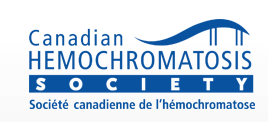
- This event has passed.
Susan Gram – Niagara chapter of the Canadian Hemochromatosis Society

Susan Gram, – Niagara chapter of the Canadian Hemochromatosis Society
Topic: Hereditary hemochromatosis – a genetic, metabolic disorder that results in iron overload
Hereditary blood disorder affects many Canadians
Duncan McLaren introduced Susan Gram of the Niagara chapter of the Canadian Hemochromatosis Society. Her topic was hereditary hemochromatosis — a genetic, metabolic disorder that results in iron overload. Susan has hemochromatosis and told her personal journey with this condition.
 Susan explained that HHC is one of the most common genetic disorders in Canada, affecting one in 300 Canadians. The disorder causes the body to retain too much iron from dietary sources that builds up in various body organs such as liver, pancreas, heart, pituitary gland, joints, and endocrine glands. It affects both men and women and is most prevalent in those of European and Celtic descent but can be found in other ethnic backgrounds as well.
Susan explained that HHC is one of the most common genetic disorders in Canada, affecting one in 300 Canadians. The disorder causes the body to retain too much iron from dietary sources that builds up in various body organs such as liver, pancreas, heart, pituitary gland, joints, and endocrine glands. It affects both men and women and is most prevalent in those of European and Celtic descent but can be found in other ethnic backgrounds as well.
Susan said that HHC cannot be cured but added that most of the complications are preventable with early testing, diagnosis, and treatment.
She pointed out that, until recently, most general practitioners believed the disease was extremely rare and patient’s symptoms were overlooked or attributed to other causes. Some of the general symptoms include chronic fatigue, loss of body hair, thyroid problems, sudden weight loss, personality changes, arthritic pain, and bloating.
Hereditary Hemochromatosis is caused by defects in the gene called HFE. Screening blood tests for Ferritin levels must be specifically ordered by a physician, but DNA testing can confirm whether or not an individual with elevated transferrin saturation and serum ferritin has HHC.
Susan said that one in nine Canadians are carriers of the disease. She said a person must inherit two defective copies of the HFE gene — one from each parent — for hemochromatosis to occur.
Treatment involves removing blood from the patient. When the body creates new blood, excess iron is drawn from other organs and tissues.
Susan said that in her own case, the blood letting brought her levels back to normal with no organ damage. People with hemochromatosis must maintain their lower iron levels for life with periodic blood removal. She said that this blood can often be donated to Canadian Blood Services through blood donor clinics.
Susan urged everyone to be vigilant in looking at items like diet supplements that can in heavy in iron. The society is based in Richmond, B.C., and more information is available on the website www.toomuchiron.ca
Duncan thanked Susan for her informative talk and presented a donation on behalf of PROBUS to the Canadian Hemochromatosis Society.

